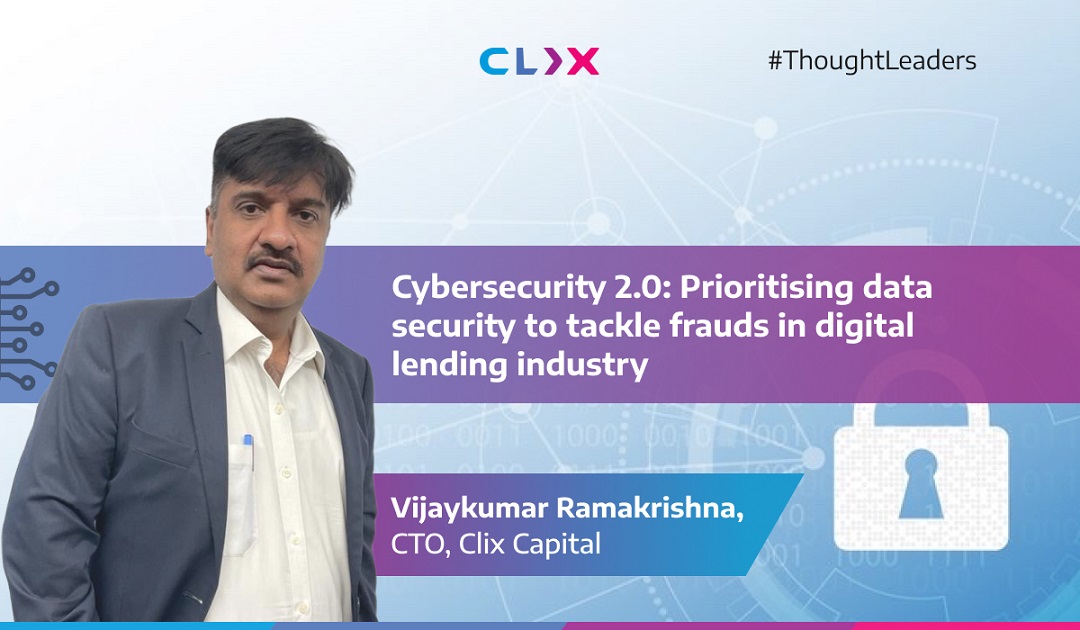Cybersecurity 2.0: Prioritising Data Security To Tackle Frauds In Digital Lending Industry

The digital landscape has significantly altered the way we live, impacting every facet of our lives. Technological advancements, such as UPI, online payment apps, RTGS, NEFT, and paperless digital loans, have revolutionized transactions. Consequently, the digital lending sector in India has witnessed remarkable growth. While enhancing convenience, this evolution has introduced new challenges, especially in the realm of cybersecurity.
Securing data and addressing fraud within the digital lending domain is crucial due to the high stakes involved. The surge in digital transactions in India, fueled by factors like widespread smartphone adoption and increased internet connectivity, has created a conducive environment for both lenders and borrowers. This has facilitated seamless transactions and access to financial products and services.
However, the digital lending industry faces escalating cybersecurity risks. A recent survey by the Fintech Association for Consumer Empowerment highlighted data privacy and cybercrime as major risks in the evolving digital lending ecosystem. From identity theft to loan frauds, the threats are diverse and continuously evolving. To counteract these challenges, industry players must adopt a holistic approach, embracing ‘Cybersecurity 2.0.’
‘Cybersecurity 2.0’ represents more than just an upgrade; it signifies a comprehensive shift in how we perceive and address digital threats. It advocates for a multifaceted strategy beyond conventional security measures, prioritizing data security to address the core elements of this new paradigm. In the digital lending landscape, customer data privacy is paramount. Ensuring its confidentiality, integrity, and availability is non-negotiable.
Industry players are embracing ‘Cybersecurity 2.0’ by implementing state-of-the-art technologies like Firewalls, Intrusion Detection, and Prevention systems. These not only secure digital assets and protect hardware but also address issues like data breaches, unauthorized threats, and intrusions, preventing or stopping cybersecurity attacks.
Essential practices include regular data backups with a recurrence schedule to ensure data recovery in case of loss or breaches. Digital lending companies should appoint a dedicated Data Protection Officer to adhere to Data Protection Laws and Standards. Employee training programs are crucial to educating staff on cybersecurity and data security, preventing accidental data breaches.
Strict access control measures should be in place, allowing access on a “Need-to-know basis only” to authorized staff. Periodic IT Risk Assessments and General Control drills, such as Security Audits and Reviews, identify gaps and enable timely adjustments. Incorporating security measures throughout the software development life cycle and conducting security tests help identify and address vulnerabilities at the source. Additionally, encrypting database servers using AWS native services is an industry-adopted measure.
‘Cybersecurity 2.0’ emphasizes information sharing and industry collaboration to stay ahead of emerging threats. Active participation in industry forums, sharing threat intelligence, and collaborating with other stakeholders strengthens collective defense against cyber adversaries. Advanced technologies like machine learning and artificial intelligence enable real-time analysis of vast amounts of data, identifying patterns indicative of fraudulent activities and responding swiftly to potential threats.
While technology plays a crucial role, the human element is equally important. ‘Cybersecurity 2.0’ places a strong emphasis on user education and awareness. Investments are made in training customers to recognize phishing attempts, understand security practices, and promptly report suspicious activities. In the dynamic landscape of digital lending, regulatory compliance is not just a checkbox but a cornerstone of building trust. ‘Cybersecurity 2.0’ aligns with and often exceeds regulatory requirements, ensuring that customer data is handled with the utmost care and diligence.
‘Cybersecurity 2.0’ is not solely a technological imperative but a commitment to customers. By prioritizing data security, adopting cutting-edge technologies, fostering collaboration, and promoting user education, we thwart cyber threats, laying the groundwork for a secure and resilient future for the digital lending industry in India. In this ever-evolving landscape, the dedication to cybersecurity is not just a response to challenges; it is a proactive stance that defines a commitment to trust, transparency, and technological excellence.
For any queries, find us on Facebook, Instagram, LinkedIn, Twitter, or WhatsApp. You can also reach us at hello@clix.capital.com. T&C Apply*.
Comments are closed.